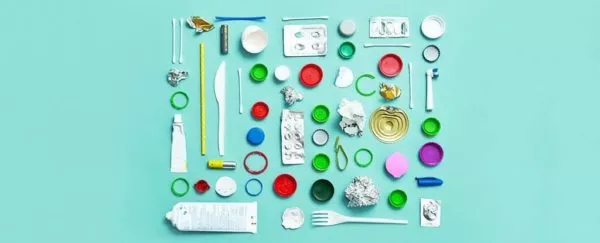By DAVID NIELD, Science Alert.
Our planet and everything that lives on it is buckling under the weight of all the plastic waste we’re producing. The volume of these non-biodegradable materials discarded after use is only increasing, so we need new ways to tackle them, and fast.
A new study demonstrates the proof-of-concept of an entirely new approach to plastic recycling, inspired by the way nature naturally ‘recycles’ the components of organic polymers present in our environment.
The approach takes guidance from the fact that proteins within organic polymers are constantly broken down into parts and reassembled into different proteins, without losing the quality of the building blocks. In essence, when it comes to recycling plastic – a synthetic polymer – without degrading it, we have to think smaller.
Proteins are one of the main organic compounds that act as building blocks for everything biological. They’re long chains of molecules (or monomers) known as amino acids, and researchers think that the way these molecules can be broken up and reconfigured suggests a potential strategy for recycling synthetic polymers.
“A protein is like a string of pearls, where each pearl is an amino acid,” says materials scientist Simone Giaveri, from the École polytechnique fédérale de Lausanne (EPFL) in Switzerland.
“Each pearl has a different color, and the color sequence determines the string structure and consequently its properties. In nature, protein chains break up into the constituent amino acids, and cells put such amino acids back together to form new proteins – that is, they create new strings of pearls with a different color sequence.”
The researchers have called their approach “nature-inspired circular-economy recycling”, or NaCRe for short.
In lab tests, the team was able to divide selected proteins into amino acids, then assemble them into new proteins with different structures and uses. In one case, they turned the proteins from silk into green fluorescent protein, which is a glowing tracer used in biomedical research. Despite this deconstruction and reconstruction, the quality of the proteins remains constant.
Click here to read the full article on Science Alert.



